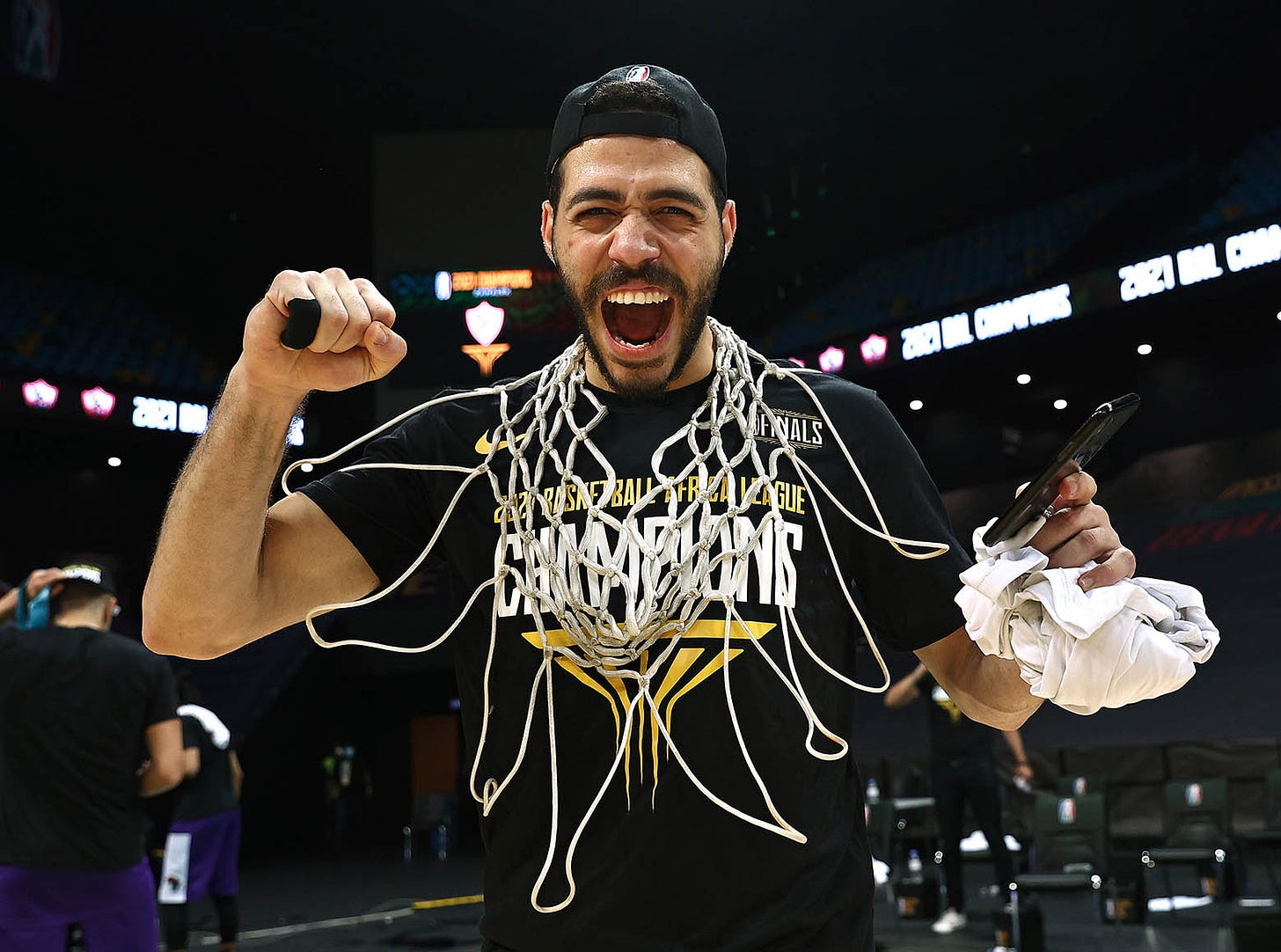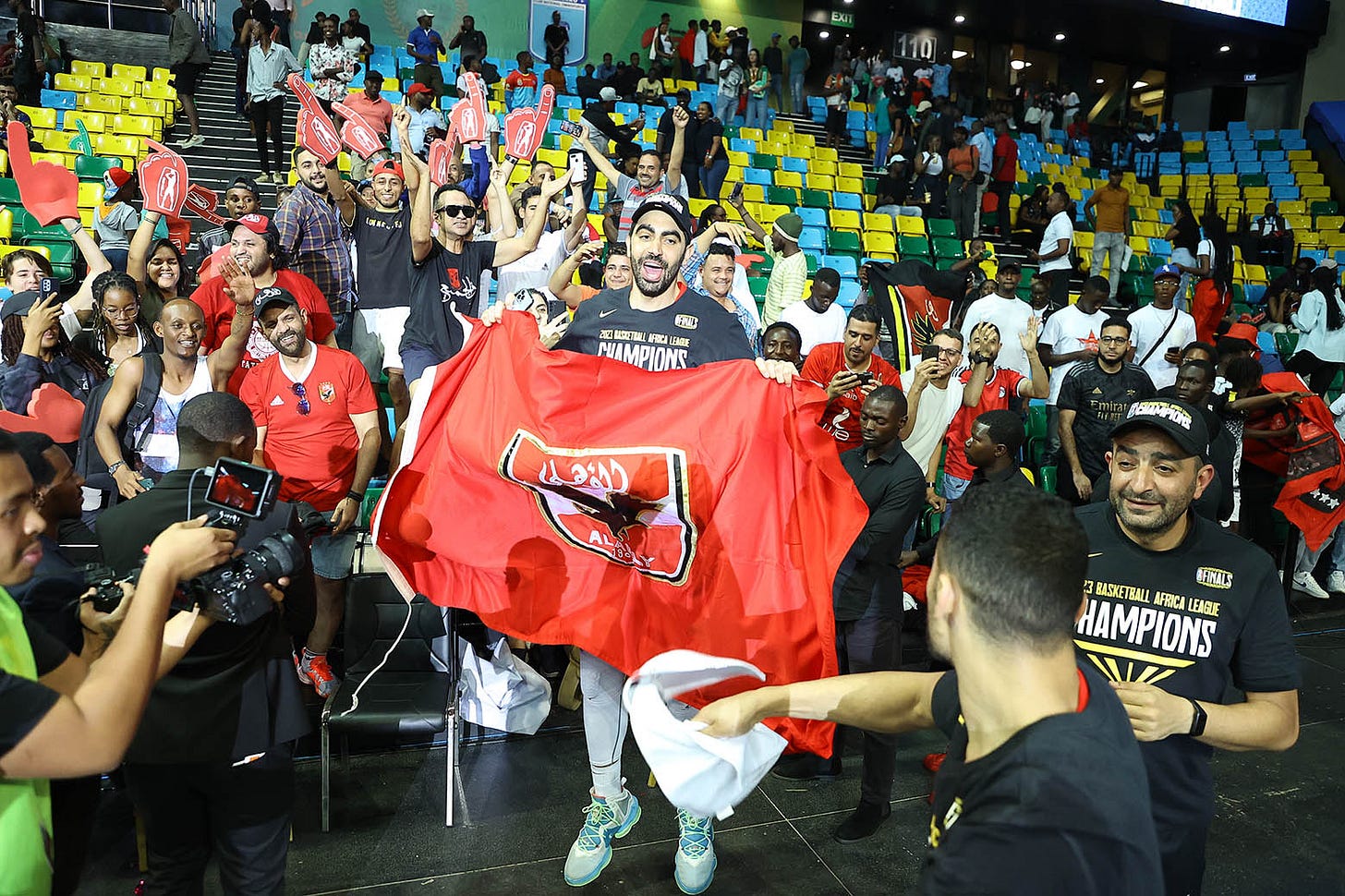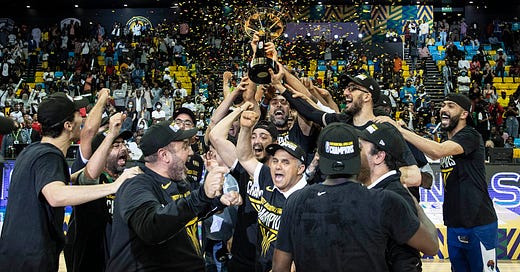North Africa are the undisputed kings of our basketball courts – but why?
Dominance doesn’t just happen. You need good money, good management. And you need to taste blood.
The third season of the Basketball Africa League (BAL) has recently wrapped in its now established playoff home of BK Arena in Rwanda’s capital, Kigali. Three seasons, three different teams hoisting the trophy – but one common thread. In 2021’s inaugural season Zamalek won.
In 2022, US Monastir won. This year, Al Ahly. That’s Egypt, Tunisia and Egypt again.
Three teams, two countries, one region.
The well-heeled endeavour – a collaboration between the National Basketball Association and the International Basketball Federation – is touted as Africa’s premier men’s basketball league and has aspirations of exhibiting world-class talent from the continent and a high-quality entertainment product.
It might be prudent, then, to see three North African teams winning the league in its first three years as a statement, or at least a suggestion, of dominance – even if it’s just for the time being. So far it doesn’t appear that challenges from outside the region have done enough to inspire fear.
In 2021 Egypt’s Zamalek went undefeated in its six playoff games and won the league, beating Tunisia’s US Monastir in the final. Zamalek again went undefeated in the group phase games for the 2022 season, ultimately finishing third. That season, Monastir only lost one game on its way to the championship.
This year, Al Ahly also lost only one game out of eight on its way to the top. These statistics certainly don’t paint a picture of gritty, gutted-out wins.
The league is still in its infancy. And every sports ministry across Africa that dares to pay attention to basketball does so at its own peril, knowing that in popular priorities it comes second (or third or fourth) to the continent’s year-round first choice of football – although it is worth noting that North African teams are dominant in football too, having won the last seven editions of the CAF Champions League.

It’s easy to point to financial muscle when trying to pinpoint North African teams’ supposed superiority. But Le Matin’s Mohamed Amine El Amri doesn’t believe it’s that simple.
“It’s not only financial,” he tells The Continent. “The competitiveness of the leagues in general in the north – although in Morocco this hasn’t been the case – for Tunisia and Egypt the level is just very good in the national league. So when those teams go outside of their respective countries they already have this level of good competitiveness.”
Other regions looking to improve their showings could benefit from stirring up the competition within their own borders, and tighten up their hunger for victory.
“Watching basketball for the last two decades, the competition coming from the south has loosened,” El Amri notes.
“For example, the clubs from Angola who were dominating are now below the podium almost every time.”
Indeed, Angola’s only BAL representative thus far, Petro de Luanda, is still trying to get back to its former glory. The team finished third in 2021, second in 2022 and this year, particularly disappointingly, fourth.
As ever, pinning down one reason why basketball remains in its developing stage, or is thriving in one region and not as much in another, is difficult to do. Africa is large, layered and complex, and each region, each club, has its own challenges.
A lot has to go right for teams to excel.
Some regions have an abundance of raw talent – but even the most talented seven-foot teenagers need the training and experience to develop competitively in well-organised structures. And sometimes, it’s simply a matter of funding.
“The approach is really different regarding every side of the continent,” El Amri says. “You’ve got the north who is very competitive and their aim is the cup, the title, the trophy ... Western Africa you have this tendency to promote young players and maybe cash in when they go. Southern Africa, especially Lusophone countries like Mozambique and Angola, this drop in their level will have even more impact in the coming years.”
Countries like Nigeria, Cameroon, Côte d’Ivoire and the Congo, meanwhile, have had perplexing showings thus far, despite the wealth of talent they supply internationally: “They could easily have great basketball clubs but on a managerial level – federations and clubs are not run very well compared to other parts of the continent,” El Amri speculates.
North Africa’s big, historic clubs also have the prestige and proximity to Europe that attracts and holds on to good players.
Whereas players from further south might be more tempted to pack their bags and seek their fortunes elsewhere.

Still, Sub-Saharan African teams are closing the competitive gap, however slowly. “Countries like South Sudan and even South Africa have that potential,” says El Amri. But he underscores that potential can only be tapped into when there is solid internal competition within their borders. And, again, money is needed to make this happen. “They need the means to not just have single club representation. They need to have five, six, even 10 clubs in each country ... to gather money [to do that] in football is very hard, let alone basketball.”
Funding and market attractiveness can only do so much, and passion from fans shouldn’t be overlooked. The game’s popularity on the continent is still warming up, rather than on the boil.
It’s a long game. For now, northern African teams have the components to create a perfect storm of success, and if their regional peers want a seat at the top table, they’re going to have to consolidate their bases. And maybe fight among themselves just a little more.




